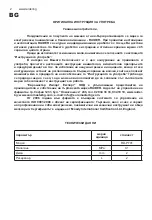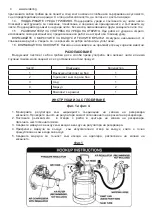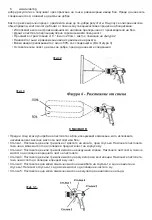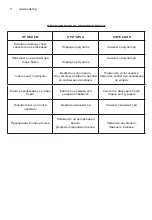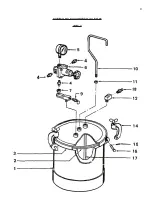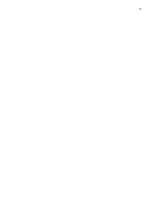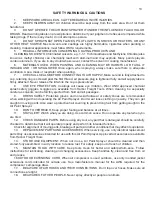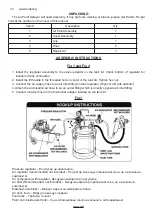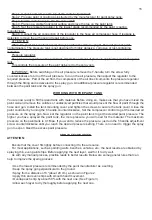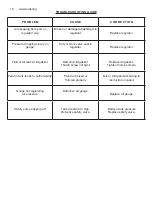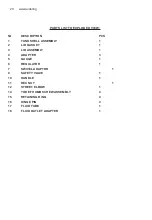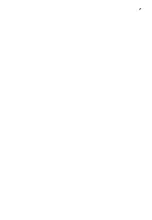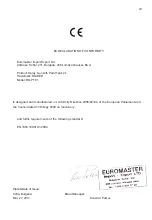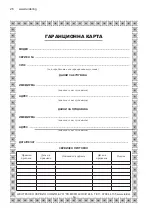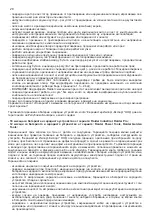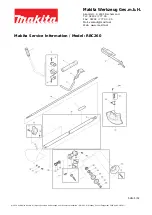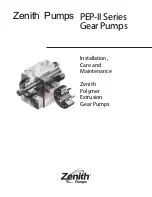
15
Step 1. Unpack and remove the top of the container/paint tank
Step 2. Prepare paint or coating as instructed by the manufacturer for paint spray guns.
Step 3. Fill the container up to 3/4. Do not overfill!
Step 4. Place on a stable horizontal surface and place the top on the paint tank.
Step 5. Set the pressure regulator to the lowest grade recommended by the paint / coating
manufacturer.
Step 6. Connect the air connection of the regulator to the hose air compressor hose. If leakage is
detected, remove the air hose and repair before use.
ATTENTION:
When the paint tank contains liquid, always position the cistern upright. This will prevent paint
contamination. The pressure tank is not designed for highly abrasive, corrosive or rust-containing
materials.
Pressure regulator.
The pressure regulator on the paint tank adjusts the amount of pressure applied to paint in the paint
tank.
This controls the pressure of the paint delivered to the spray gun.
IMPORTANT: Before switching on the air pressure, remove the T-handle, turn the screw fully
counterclockwise to turn off the air pressure. Turn on the air pressure, then adjust the regulator to the
required pressure. Part of the air from the compressor or the air line circumvents the pressure regulator
through the fitting and is delivered to the spray gun. An additional pressure regulator is recommended
between the paint tank and the spray gun.
WORKING WITH THE PAINT TANK
You are now ready to fill the rpaint tank with material. Before doing so, make sure that you have mixed the
paint well and remove the cuticles or undissolved particles that would prevent the flow of paint through the
hose and gun. Install the tank mounting cover and tighten the screws to secure the tank cover. Close the
paint controller by turning the T-handle counterclockwise. Set the compressor control to get the desired air
pressure on the spray gun. Now set the regulator on the paint tank to get the desired paint pressure. The
higher you have sprayed the paint tank, the more pressure you will need for the material. The maximum
pressure on the paint tank is 0.1 Mpa. If you want to reduce the pressure, just turn the T-handle adjustment
screw counterclockwise until you reach the desired pressure setting. There is no need to trigger the spray
gun to expel / bleed the excess paint pressure.
SPRAY TECHNIQUES
ATTENTION:
Ensure that the cover fits tightly before connecting it to the air source.
For most applications, such as painting walls, benches, vehicles, etc., the best results are obtained by
spraying thin, even paint strips. Before applying the next layer, wait for it to dry well.
As with any manual process, practice leads to better results. Below are some general rules that can
help to improve the dyeing process:
• Use the lowest pressure recommended by the paint manufacturer as a setting.
• Keep the spray gun perpendicular to the ground.
• Spray from a distance of 8 “(about 20 cm), as shown in Figure 2.
• Apply thin and even strips with smooth hand movement.
• Overlap each strip by about 50% with the next one. (See Figure 3).
• Allow each layer to dry thoroughly before applying the next one.
Summary of Contents for RD-PT01
Page 9: ...9 СХЕМА НА КАЗАНЧЕТО ЗА БОЯ ФИГ 4 ...
Page 11: ...11 ...
Page 19: ...19 EXPLODED VIEW OF A PAINT TANK Fig 4 ...
Page 21: ...21 ...


